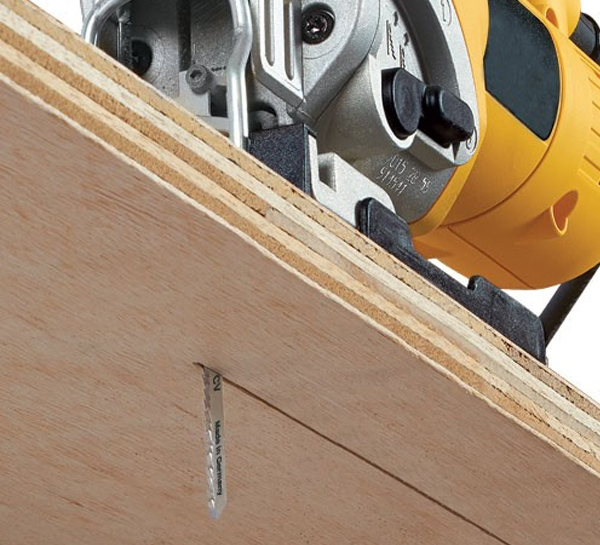Trend Professional jigsaw blades |
||||||
 |
||||||
|
|
Jigsaws are versatile and popular woodworking that are used for making cuts in a variety of different materials. They are ideal for use with natural wood, plywood, particleboard, and plastic, as long as you choose the right blade. They are safe and easy to use, which makes them the ideal power saw for anyone new to DIY and woodworking. Trend have used their extensive woodworking knowledge and their innovative technology to produce a range of for jigsaws. |
|
||||
|
We have five different, professional quality jigsaw blades. Each features a universal T-shank bayonet fitting, and they are ideal for general woodworking tasks. Designed to fit in jigsaws from Black & Decker, Dewalt, Hitachi, AEG, Festool, Bosch, Stanley Fat Max, MacAllister, Powerbase, Makita, McKeller, or Metabo. |
||||||
Up-cut jigsaw blades 75mm x 2.5mm |
||||||
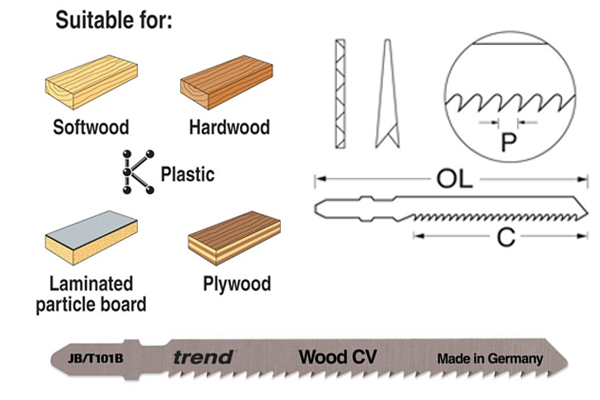 |
are cross-ground with a tapered back. They are designed to make straight, fine up-cuts in hard and soft wood, plywood, laminated particle board, and plastics. They have an overall length of 100mm (4"), blade length of 75mm (3") and a pitch of 2.5mm, with 10 tpi. They can be used with timber that is 4mm - 30mm thick. |
|||||
Down-cut jigsaw blades 75mm x 2.5mm |
||||||
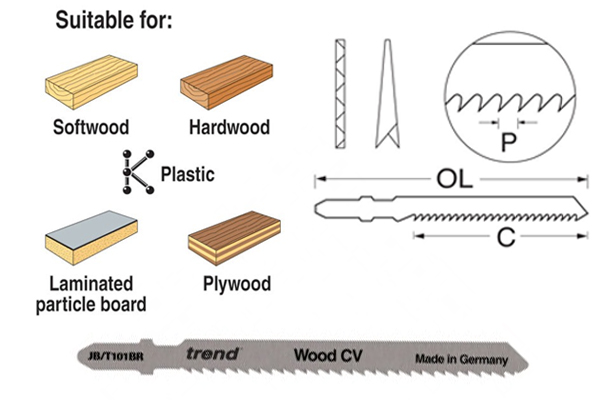 |
are designed for making fine, straight, down-cuts in plastic, laminated particle board, plywood, and natural timbers. They are intended to be used with timbers that 4mm - 30mm. The blades are 75mm (3") long with an overall length of 100mm (4"). The pitch is 2.5mm with 10 tpi. |
|||||
Up-cut jigsaw blades 75mm x 4mm |
||||||
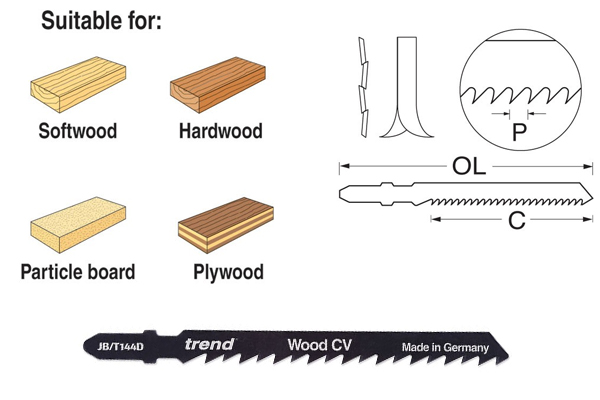 |
are made for fast cutting. They're perfect for making very fast, clean straight cuts in all natural woods, particle board, and plywood, in thicknesses of 6mm - 60mm. They have an overall length of 100mm (4") with blades that are 75mm (3"). They feature 6 tpi with a 4mm pitch, and they are up-cut, cross-ground and set. |
|||||
 |
||||||
Up-cut jigsaw blades 75mm x 3mm |
||||||
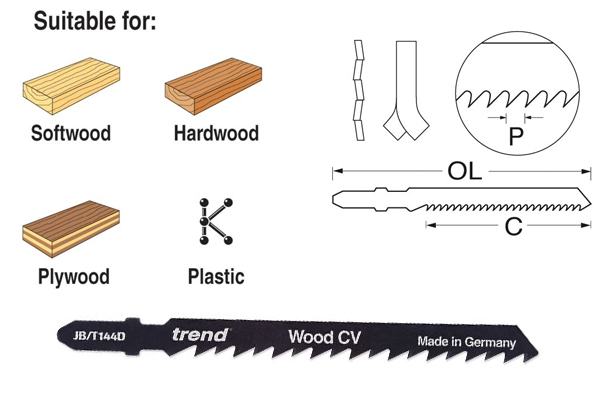 |
are milled and alternate set up-cut jigsaw blades. They are designed for making coarse, fast cuts in hard and soft woods, plastic, and plywood. They are 100mm in total length with a 75mm blade, a 3mm pitch, and 8 tpi. They will cut timbers between 8mm and 60mm thick. |
|||||
Up-cut jigsaw blades 55mm x 2mm |
||||||
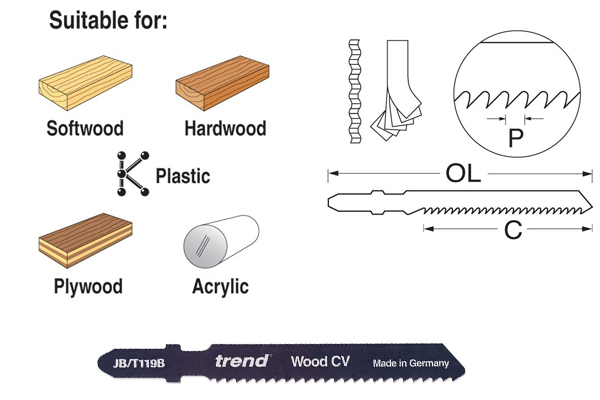 |
are perfect for straight cutting natural soft and hard woods, insulated material, acrylic, plastic, and plywood. These blades are milled and wavy set, with an overall length of 75mm, a blade length of 55mm, and a pitch of 2mm. They feature 12 tpi and will cut timbers that are 4mm - 30mm thick. |
|||||
|
If you're looking for a new jigsaw power tool you can browse the selection we have at Wonkee Donkee Tools, just click here.
For help with guiding your jigsaw, you can browse our selection of jigs, templates for cutting power tools, . |
||||||
Basic tips for Tips for using a jigsaw |
||||||
|
A common jigsawing mistake is using the wrong wood-cutting blade for a specific application, and it's easy to pick the wrong blade because jigsaw blades come in many different tooth configurations, widths, and lengths. |
||||||
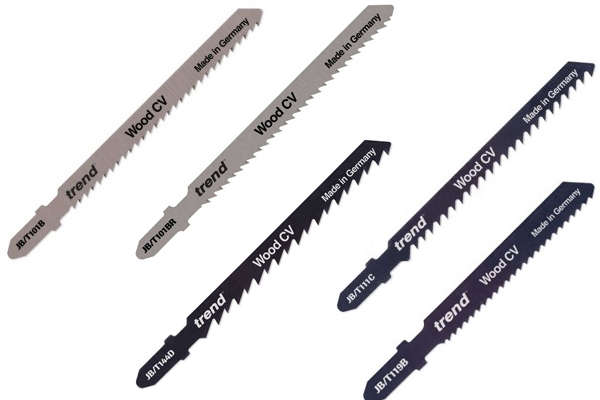 |
When choosing a blade you should bear in mind. Wider blades are better for making cuts that are long and straight, and narrower blades are better for making curved cuts. Blades that have larger and fewer teeth will cut very quickly but produce a finish that is rough and splintered, whereas blades that have smaller teeth and more of them will cut more slowly to produce a smoother finish. Before you buy new blades, check the specification for the thickness and type of material it is designed to be used with. |
|||||
 |
||||||
Making straight cuts with a jigsawProducing an absolutely straight cut freehand with a jigsaw is very difficult, and you will usually find that the saw will easily shift off course. The best way to produce a perfectly straight line with a jigsaw is to use a clamped-down straightedge guide, such as the or something similar, as long as it's completely straight. |
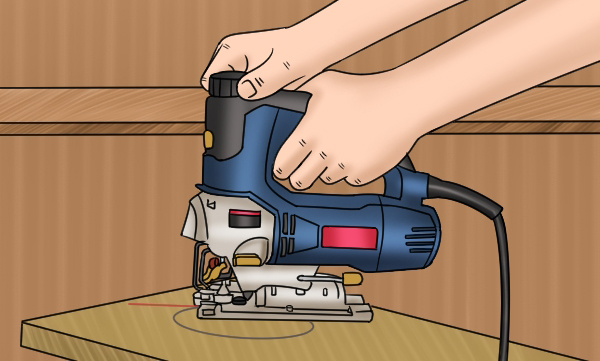 |
|||||
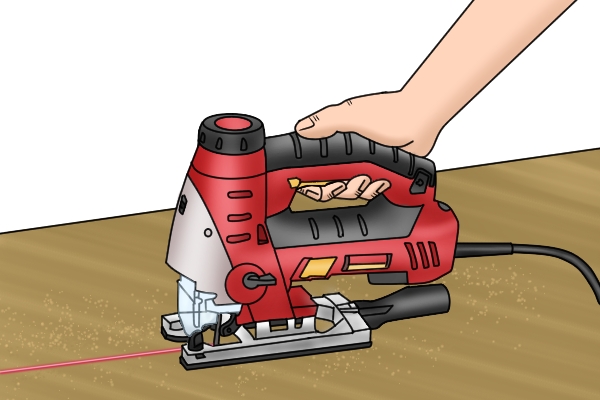 |
Start a straight cut by feeding the blade into the cut and use one hand to support the edge of the saw's base plate, and push in toward the guide. Move the saw slowly and keep the pressure even. Sometimes, when making longer cuts, a single guide won't be enough and you may need to clamp down another straightedge guide, positioned parallel to the first. But the two boards should be separated by a few millimetres plus the width of the saw's base plate and the cut can be made by directing the saw between the two guides. |
|||||
How to know when your jigsaw blade needs replacing |
||||||
|
For your jigsaw to be effective you should ensure the blade you have installed is sharp, as, over time, jigsaw blades will wear down, lose their cutting ability and need to be replaced. Worn out blades struggle to cut effectively because their teeth lose their sharpness, which can mean your jigsaw will make poor-quality and rougher cuts. Also, blunt teeth can cause the blade to stray off course and it will become difficult to guide your jigsaw along the cutting line. With a new, sharp blade your jigsaw should be able to cut through a range of materials and perform to its best ability. |
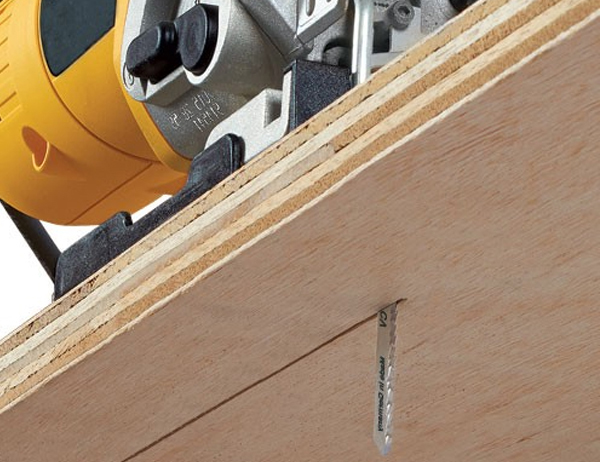 |
|||||
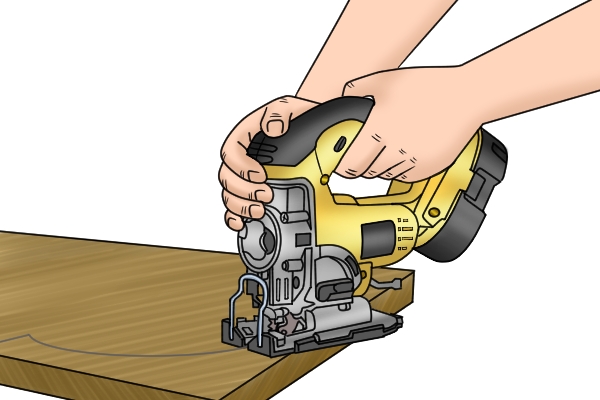 |
With a sharp blade, your jigsaw will do the work for you, so you won't have to apply much pressure to work the tool. But, if the blade blunt, you will need to push your jigsaw through the workpiece, which is the first indication that it will soon need to be replaced. If you think the jigsaw blade is blunt, compare it with a new blade as you will see the difference between the cutting edges of the two blades if the old one need replacing. An older blade will have more rounded teeth compared with the razor-sharp teeth of a new one. |
|||||
 |
||||||






